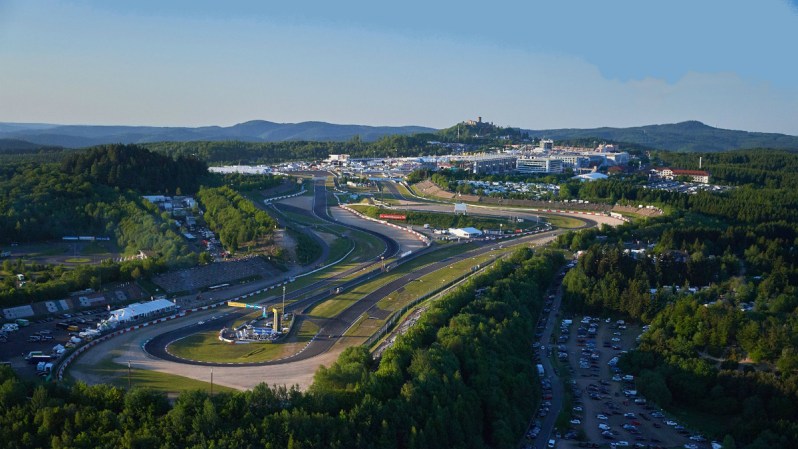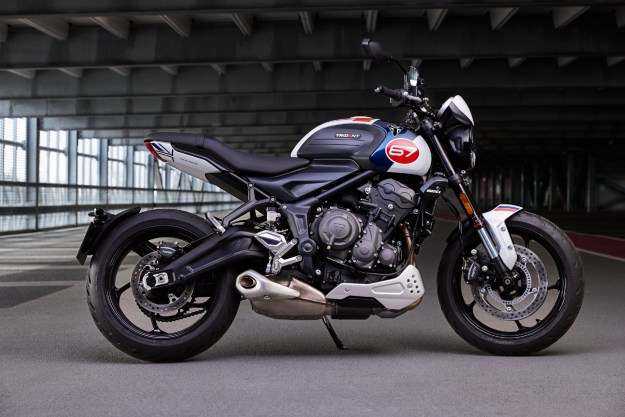
Timo Bernhard is not human. He, like the Porsche 919 Evo racecar, are lithe machines built to do battle on a single surface; the Nurburgring.
For 35 years, racecar driver Stefan Bellof held the Ring record. Behind the wheel of a Porsche 956C racecar, Bellof pulled off a staggeringly fast feat. He blitzed the infamous race track in just 6:11.13 minutes. It was a record that many thought would never be beaten. How could anyone go faster around a track that’s claimed so many lives? However, over the intervening years, more and more production cars have inched closer to that record. Still tens of seconds off, but the latest group of supercars have all dipped under the 7-minute mark. If only a manufacturer would bring a proper racecar to the track. Enter the 919 Evo.
Then Porsche retired its Le Mans winning 919 Hybrid last season. Like most racecars, everyone believed that the 919 Hybrid would just be retired and placed on display at Porsche’s Weissach facility. Forever stationary. But Porsche had other plans. Instead of a life filled with collecting dust, Porsche’s top brass gave the 919 Hybrid back to the race team and said, “Go nuts.”
The goal was to take the wildest evolution of the 919 Hybrid to tracks around the world with the ultimate goal of smashing records. For that, and with no rules or race regulations to hamper their engineering or creativity, Porsche’s engineers went wild. The 919 went on a diet that’d make Jenny Craig green with envy. Coming in at just 1,872 lbs, the 919 Evo weighs just 200 lbs more than the skeletal Ariel Atom 3S. The engineers then took to increasing its power output. In race-spec, the 919’s V-4 engine makes 500 horsepower and is aided by another 400 horsepower from its hybrid batteries. The 919 Evo, however, makes a grand total of 1,160 horsepower.
Aerodynamics were also reconfigured and a host of those changes come from the Formula 1 world, including a drag-reduction system that stalls the rear wing on a course’s straights. Michelin was also tasked at creating a new tire compound that would increase the racecar’s performance while simultaneously maintaining the car’s safety. The end result is exactly what Porsche had envisioned when it gave this program the green light; a record smasher.
On its first outing at Spa-Francorchamps, the 919 Evo lapped the legendary Formula 1 track in just 1:41.770, or nearly a second faster than Formula 1 great Lewis Hamilton’s qualifying record set late last year. But that was just a warm up for the big one; the Nurburgring Nordschleife.
On June 29th, Timo Bernhard woke up early, hopped into the 919 Evo and got to work. His first session, a blistering 5:24 time. It smashed Bellof’s record. But Bernhard felt they could go faster. The engineers looked over the car, prepped everything, and set Bernhard loose once again to do battle with the track affectionately known as the Green Hell. The lap, 5:19.54.
Bernhard didn’t just smash the 35-year old record, he obliterated it by nearly a full minute.
The in-car video looks as if it was sped up by a factor of three. Bernhard appears to not be using his eyes, but the Matrix to understand that there are no turns, just straights. He appears, super human. More machine than man. If you doubt this, watch the video above, then watch the video below of racecar driver Lars Kern setting a production record in Porsche’s 700 horsepower GT2 RS monster at the ‘Ring as well. The speed differentials are staggering.
All hail Porsche!


